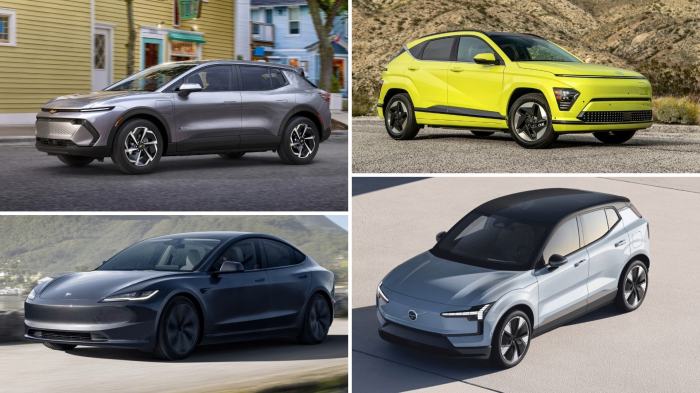Most affordable electric vehicles are revolutionizing the automotive landscape, making eco-friendly transportation accessible to a wider audience than ever before. As the shift towards sustainability gains momentum, understanding the significance of affordability in this market is crucial for consumers looking to minimize their carbon footprint without breaking the bank. With a variety of options available today, it’s easier than ever to find electric vehicles that meet both financial and environmental needs.
You also can investigate more thoroughly about Lotus Emira V6 First Edition to enhance your awareness in the field of Lotus Emira V6 First Edition.
This exploration highlights the current most affordable electric vehicles, the features that contribute to their budget-friendly pricing, and the various financial incentives available to make electric vehicle ownership more attainable. By analyzing cost comparisons and market trends, we reveal why these vehicles are becoming increasingly popular among consumers of all demographics.
Investigate the pros of accepting Best sports cars 2024 in your business strategies.
Overview of Affordable Electric Vehicles: Most Affordable Electric Vehicles
The rise of electric vehicles (EVs) has transformed the automotive landscape, making them a viable option for environmentally conscious consumers. However, the significance of affordability cannot be overstated in this market. Affordable electric vehicles are crucial in promoting wider adoption among various demographics, allowing more people to transition from traditional gas-powered vehicles to sustainable alternatives.
Currently, several affordable electric vehicles are available, catering to budget-conscious buyers. Notable entries in this category include the following:
- 2023 Chevrolet Bolt EV
- 2023 Nissan Leaf
- 2023 Hyundai Kona Electric
- 2023 Mini Electric (Mini Cooper SE)
- 2023 Kia Soul EV
The affordability of these vehicles is often attributed to their compact designs, efficient manufacturing processes, and the integration of cost-effective technologies. These factors contribute to lower prices without compromising essential features such as safety, range, and performance.
Cost Comparison
Understanding the financial implications of owning an electric vehicle is vital for potential buyers. The following table compares the prices of various affordable electric vehicles, showcasing their initial costs.
| Model | Base Price | Range (miles) |
|---|---|---|
| Chevrolet Bolt EV | $26,500 | 259 |
| Nissan Leaf | $27,400 | 149 |
| Hyundai Kona Electric | $34,000 | 258 |
| Mini Electric | $30,000 | 110 |
| Kia Soul EV | $33,000 | 243 |
When considering the total cost of ownership over a five-year period, several factors come into play, including charging costs, maintenance, and potential depreciation. Operational costs for affordable electric vehicles generally include:
- Charging costs: Charging at home is often cheaper than gasoline, with an average cost of around $0.13 per kWh.
- Maintenance: EVs have fewer moving parts, leading to lower maintenance costs over time.
Financial Incentives and Rebates

Various financial incentives can significantly reduce the purchase price of affordable electric vehicles. Understanding these incentives is crucial for maximizing savings.
State and federal rebates available for EV buyers include:
- Federal Tax Credit: Up to $7,500 for eligible electric vehicles.
- State Rebates: Vary by state, often providing additional savings.
- Utility Incentives: Discounts or rebates from local utility companies for EV owners.
Tax credits are also available, further enhancing the affordability of electric vehicles for buyers.
Market Trends and Consumer Preferences

Current trends in the electric vehicle market reveal a strong focus on affordability. Consumers increasingly prefer vehicles that offer both functionality and cost-effectiveness.
Consumer preferences are influenced by several factors, including:
- Price sensitivity: Many buyers prioritize lower upfront costs.
- Range anxiety: Consumers look for vehicles with a sufficient range for daily needs.
- Brand reputation: Established companies often attract buyers due to trust and reliability.
Demographic factors, such as income levels and environmental awareness, also play a significant role in influencing the purchase of affordable electric vehicles.
Environmental Impact

Choosing affordable electric vehicles over traditional gas-powered vehicles offers substantial environmental benefits. These vehicles contribute to reducing greenhouse gas emissions and improving air quality.
Statistics on emissions reduction achieved by affordable electric vehicles highlight their impact:
- EVs produce zero tailpipe emissions, significantly lowering pollution in urban areas.
- Studies indicate that electric vehicles can reduce overall lifecycle emissions by up to 80% compared to gas vehicles.
By promoting sustainable transportation solutions, affordable electric vehicles play a vital role in combating climate change.
Future Outlook, Most affordable electric vehicles
Advancements in technology are poised to further reduce the costs of electric vehicles. Innovations in battery technology, such as solid-state batteries, promise enhanced efficiency and reduced manufacturing costs.
Projections for the growth of the affordable electric vehicle segment indicate a bright future. Industry analysts expect significant increases in sales, driven by consumer demand and government incentives.
However, potential challenges include:
- Supply chain constraints: Limited availability of raw materials for battery production.
- Market competition: Increasing competition may pressure prices, impacting profitability.
The combination of technological advancements and market dynamics will shape the future of affordable electric vehicles.
Ultimate Conclusion
In conclusion, the future of affordable electric vehicles is bright, as technological advancements continue to push prices down while enhancing features. With numerous financial incentives and a growing commitment to sustainable transportation, these vehicles not only represent a smart financial choice but also a significant step towards a cleaner environment. Embracing affordability in electric vehicles is not just a trend; it’s a movement towards a sustainable future that benefits everyone.
